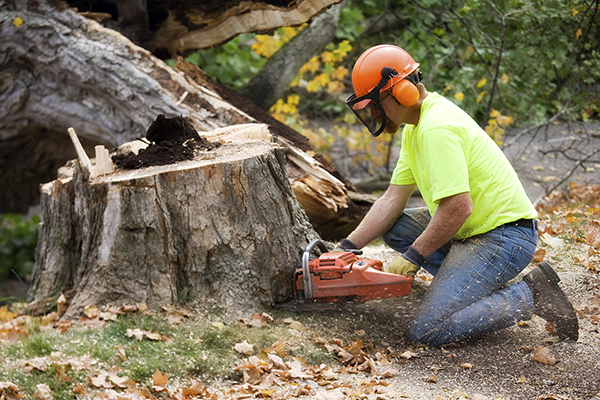News And Advice From The Leading Thousand Oaks Tree Trimming Company
Are you thinking about removing one of the treasured trees in your yard? There are many reasons you might have to remove a tree that you would otherwise want to keep. It might be diseased, have suffered damage in a storm, be in the way of a landscape redesign or be intruding on a neighbor or even a power line.

Whatever the reason to remove a tree, there’s another decision you’ll soon need to make — whether to leave the stump or remove it. If you decide to remove the stump, you’ll also need to decide whether to grind it down or remove it altogether.
Our basic rule of thumb is — remove a stump if you can. Leaving a stump in place might not cause problems at first, but the longer you leave it there the more trouble it can cause. The hazards of old stumps include the following:
- They become a trip hazard.
- They make it hard to plant a new tree or other landscaping.
- Mowing the lawn around a stump is hard, and hitting an old root with the mower could damage it.
- Rotting stumps attract damaging pests like termites and carpenter ants.
- A rotting stump is an eyesore! It can even affect your property value.
- Planting new trees near the old stump is problematic because its old roots are in the way.
The solution to avoiding these problems?
Remove the stump or grind it down. There are pros and cons to both grinding a stump and removing it. The single most important factor in making your decision is probably your future plans — what are you going to be doing with your landscaping in the near and even not-so-near future?
Stump grinding. Although there are many factors that affect pricing, including diameter of the tree, stump grinding may well be less expensive than complete removal. With that said, cost is often its main “pro.” Grinding is also less intrusive than removal — we basically just use a machine to shred the stump into small woodchips and either remove the chips of leave them for you to use as mulch in your landscape. But the tree’s roots are left behind, with all the potential issues mentioned above.
Stump removal. Stump removal involves pulling up the entire tree stump and then digging up the root system to get rid of most of what can be a very widespread network. Watch the process from beginning to end and you’ll see that it involves using heavy-duty tools and a lot of manpower. When the job is done, though, you’re left with a blank canvas — a clean area that gives you the freedom to implement a whole new landscape design. One potential drawback is that you might just be left with a large hole that you need to fill with topsoil.
Still wondering whether you’ll need a stump ground or completely removed after you remove a tree? Give us a call! We’ll come out and give you a recommendation based on your particular circumstances.

